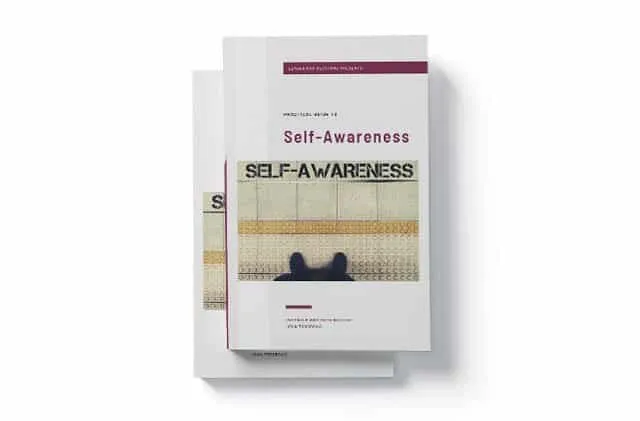It’s no secret that the world of work is changing. The traditional leadership styles that many leaders are accustomed to using may no longer be effective. In this article, we will discuss why leadership styles might be outdated and what to do about it. I will also provide guidelines for leaders on how to lead in a new age of work and provide strategies to achieve it effectively.
Are Leadership Styles Outdated?
Over the past several years, I was curious about why organizational leaders abandon recommended leadership theories in favor of their own unique, non-traditional practices that don’t match up with any existing leadership theory or model.
According to research by Jim Allen McCleskey, Faculty Manager at Western Governors University, published in the Journal of Business Studies Quarterly in 2014, there isn’t one specific leadership style that outperforms the others. This often leads to different interpretations of what effective leadership looks like from academe and those who practice it within organizations.
Leaders today do not stick to one leadership theory, but choose certain aspects from many different theories and create their own unique leadership style.
The root issue is that traditional leadership styles are not well-equipped to deal with the organizational challenges of the 21st century, such as technology, globalization, and transparency. This has led to a decrease in the effectiveness of today’s leaders.
Emerging leadership style for the post-pandemic era
In recent years, there has been a shift away from traditional, top-down leadership models to a more human-centered approach. But what does that mean, exactly? I’ve ran into this concept when companies like Experience Innovation Network and Josh Bersin Company started publishing research on the topic.
Human-centered leadership helps team members maintain and improve their physical, emotional, and mental well-being so they can feel respected, empowered, and trusted. To understand how this approach can go beyond just the theory, we can categorize leadership models into two categories: business-centered and human-centered.
Why do we need to shift our focus from business to people?
In the business-centered leadership, leaders focus on growing and improving the business, optimizing, innovating, and finances. In the human-centered leadership, leaders focus on recruiting, developing, coaching, and helping people grow. This helps leaders understand how people can solve problems, be creative, and thrive, even in the most challenging times.
Would the businesses be able to survive if we just maintained human-centered focus? No. Leaders need to pay attention on both areas. It’s just the fact that we’ve been focusing mostly on the business side since the dawn of the industrial era and in the past two and a half years we realized that won’t work anymore.
Challenges with heavy workloads, logistics and supply chain issues, the need for scale, all brought us to the point where people are overwhelmed beyond measure.
How do we nurture human-centered leadership?
All the challenges require us to shift our mindset and truly enable leaders to develop new capabilities and behaviors. There are several ways you can use to develop yourself into a leader for the post-pandemic era. The Big Reset initiative, a project of the Josh Bersin Academy, influenced this list.
1. Learn from your people
There’s no better way to learn about yourself than from your team members. They can provide you with deep insight into how you behave, how your skills are, what you do on a daily basis, and whether you do it right. One of the most powerful ways to get that information is through the 360-degree feedback. This type of feedback includes your peers, people on your team, and yourself.
2. Learn from other leaders
I’ve always been influenced by the senior leaders in any organization I was a part of. Knowledge and experience bring wisdom to people over the years, and being mentored by those people can speed up your progress. Besides mentoring, finding role models among senior leaders in and outside of your organization can transform how you lead people. You can absorb some of the best practices they follow and bring them to your team.
3. Learn from yourself
I’ve realized this through the years of practicing self-reflection. It’s incredible how much you can learn from yourself if you just pay attention. Setting time daily for practicing reflection can help you think about what you’ve done, how you did it, and what you can do better. I would also recommend that you write things down. Once you do, you can do a monthly review of the reflection and see how you progressed.
4. Learn with others
Cohort learning is not a new way of learning. It’s been around for quite some time, and I learned more effectively through it. The ability to exchange knowledge with people and build relationships along the way is an incredible way to improve retention and provide support. You can practice this within and outside of your organization.
5. Develop your listening skills
Active listening is a superpower. This requires you to truly pay attention to what others are saying, receive it, understand it, and then choose how to respond. Avoid the urge to respond as soon as someone says something, so you have enough time to process what they said and avoid any bias.
6. Nurture holistic wellbeing
The perks and benefits programs are not holistic wellbeing. Our people need to be taken care of physically, mentally, and emotionally. This requires us to be innovative in which physical wellness programs are available to our people, how they access them and how to make sure they use them. We also need to consider thinking beyond just stress or mental illness. People need to feel purposeful, happy, and that they belong.
7. Stay connected
In a remote, hybrid, and even in-office environment, it’s crucial to stay connected with your people. Everyone is busy all the time. If don’t make time to re-connect, we won’t be able to nurture a human-centered workplace. This can be done with a simple weekly check-in, where you meet or call each of your team members, even for 3–5 minutes, and check in on them. It will build capacity and capability to create meaningful connections.
8. Cultivate an inclusive mindset
Creating an inclusive workplace starts with the right mindset. Leaders who want to cultivate an inclusive environment need to be aware of their own biases and be intentional about creating a space where everyone feels like they belong. An inclusive mindset ensures that everyone feels like they are a valued member of the team and that their unique perspectives are welcome.
What’s the next step for leaders?
The traditional hierarchical leadership style is no longer effective in today’s business climate. To be successful, leaders need to focus on facilitating change rather than managing it. That means creating an environment where people feel safe sharing their ideas and challenging the status quo. It also means nurturing holistic wellbeing and cultivating an inclusive culture.
If you want to be a successful leader in the post-pandemic era, you need to take a new, human-centered leadership approach. One that is more open-minded, adaptable, and focused on employee development than ever before. It will require you to use one of the key traits of human-centered leaders — humility. To learn why humility is an essential trait for any leader, read the article below. In it, I shared 8 reasons why being humble is crucial.

Humility in Leadership – 8 Reasons Why Being Humble Is So Important
Humility is a virtue that many people value highly. It’s something we often look for in our leaders and expect from those who lead us.







